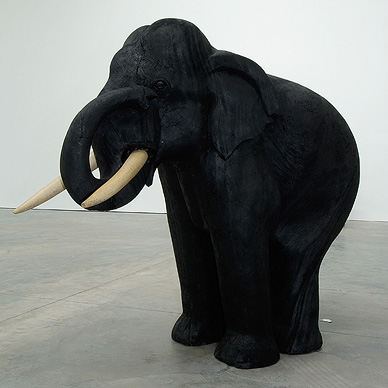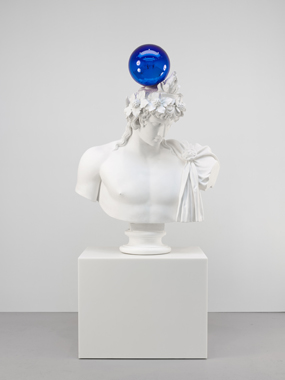Artville Artist Of The Day
LN Tallur
Man with Holes (detail), 2010
wood and silicone
98 x 4 x 31 inches
LN Tallur
Man with Holes (detail), 2010
wood and silicone
98 x 4 x 31 inches
L.N. Tallur was born in Koteswara, a small Indian village of about 14,000 people, in 1971. Tallur’s work represents an amalgamation of influences, ranging from those of the sheltered, traditional and rural farmlands he grew up on, and those he encountered and was exposed to during his many later visits to various foreign countries. Tallur studied art in various institutions, each of which has helped to shape the way he works today. In 1996, he received his Bachelor’s degree in painting from the Chamarajendra Academy of Visual Arts (CAVA) at Mysore University, and then followed it with a Master’s degree in museology from Maharaja Sayyajirao University of Baroda in 1998. In 1999, he was awarded a scholarship from Leeds Metropolitan University in the UK, to complete another Master’s degree in Contemporary Fine Art Practice.
Through exposure, experimentation and influence, the artist has managed to create a truly unique artistic vocabulary and style. As a result, each piece is complex and physically diverse. Tallur’s time at Leeds proved beneficial to his exploration of medium, material manipulation, and working on a large scale – all of which are are visible in the works he creates today. Incorporating a dynamic mix of ideas relating to politics, culture, tradition, spirituality, technological deterioration and environmental depletion, the artist’s three-dimensional works capture the absurdity of every-day village life and the anxiousness that characterizes contemporary Indian society.
Tallur was also able to grasp the importance of subtle mannerisms from the esteemed painter Bhupen Khakhar, after training under him. His work proves to be a surreal amalgamation of Indian signs, symbols and traditions held close to the heart in the country’s rural areas, focusing primarily on poverty and farmland issues. His pieces, though thought provoking to the viewers, are either a grotesque take on reality or portray a certain beauty which he has the ability to capture and create from the use of damaged objects and distorted materials.
Not only has L.N. Tallur’s work been exhibited all over the world, but he is also the winner of multiple prestigious awards. These include the Emerging Artist Award from Bose Pacia Gallery, New York, in 1999, and the Sanskriti Award from the Sanskriti Foundation, New Delhi, in 2003. His paintings have been displayed in solo and group exhibitions in India and other countries including the United States, United Kingdom, Italy, China, Cuba, South Korea and Canada. Tallur currently lives and works between India and South Korea.
courtesy: http://www.saffronart.com/
courtesy: http://www.saffronart.com/







